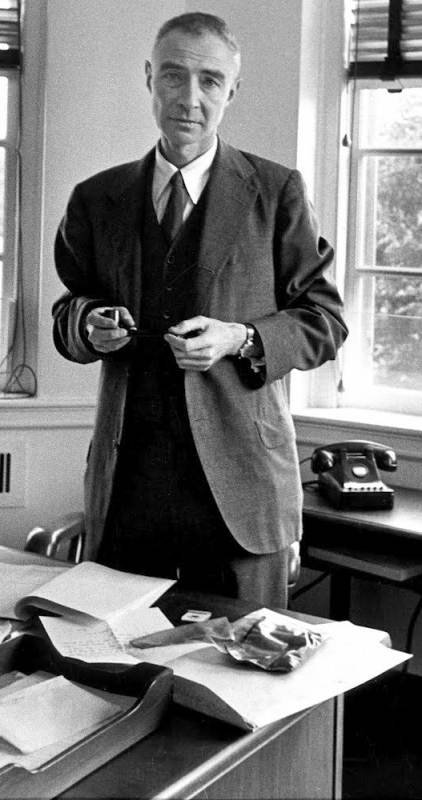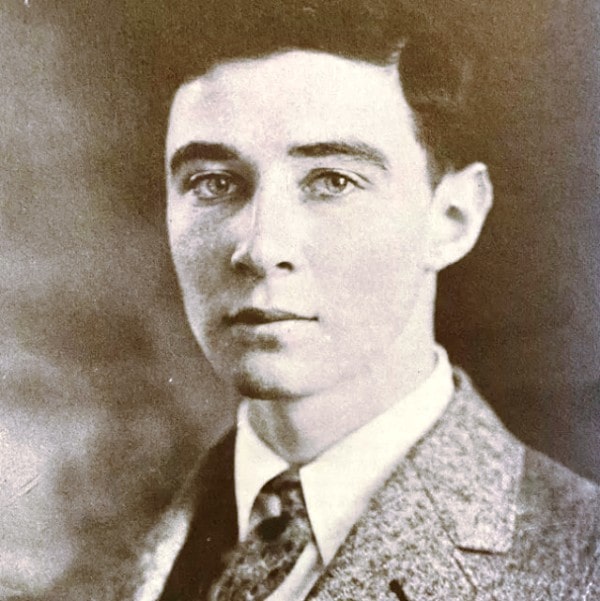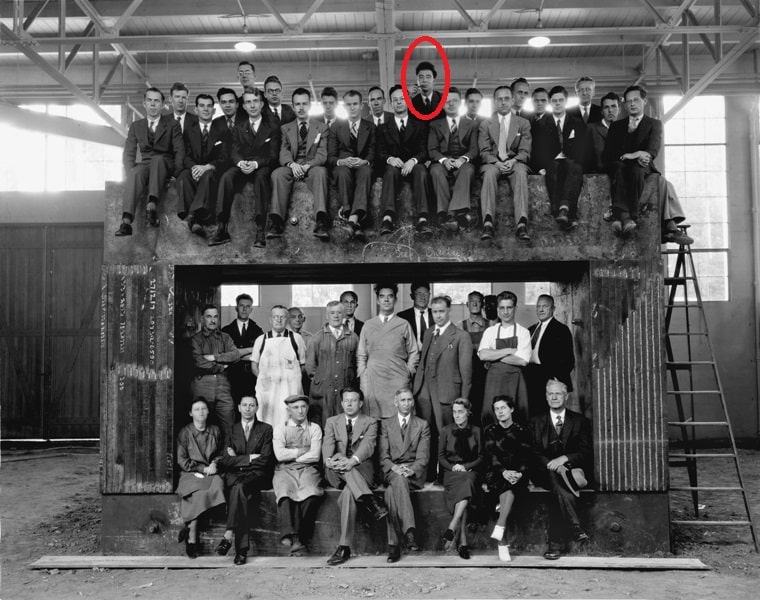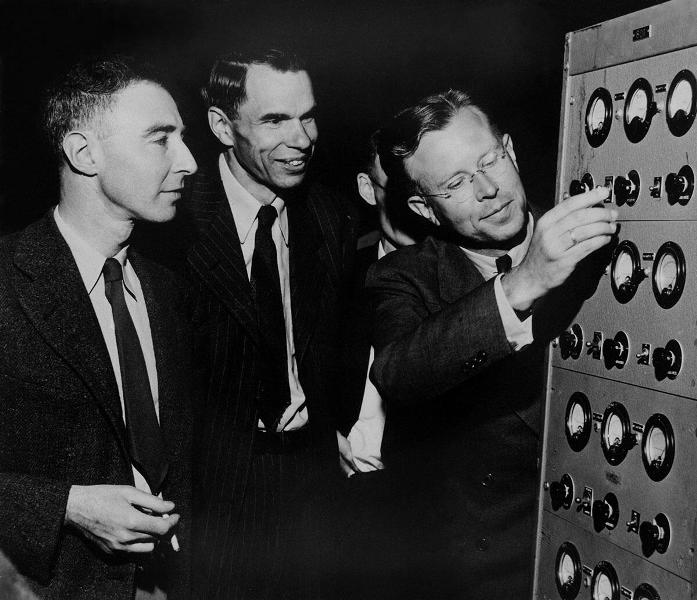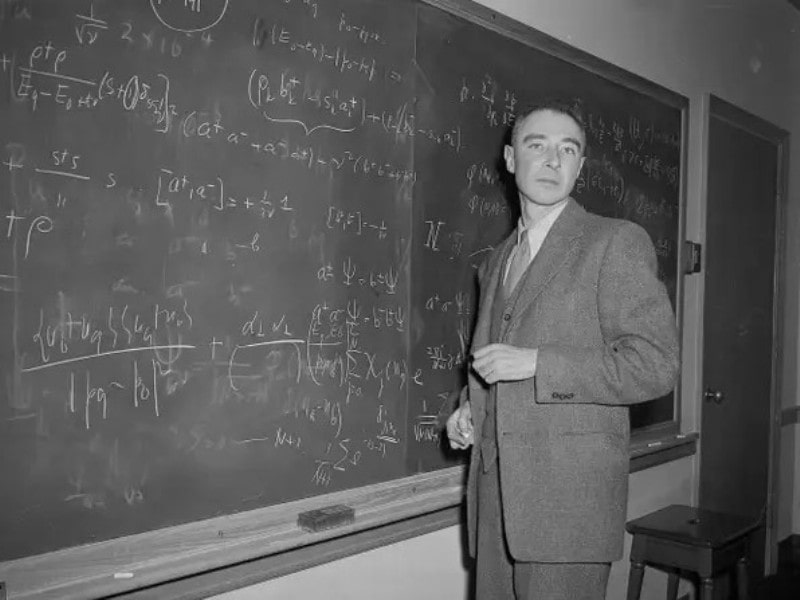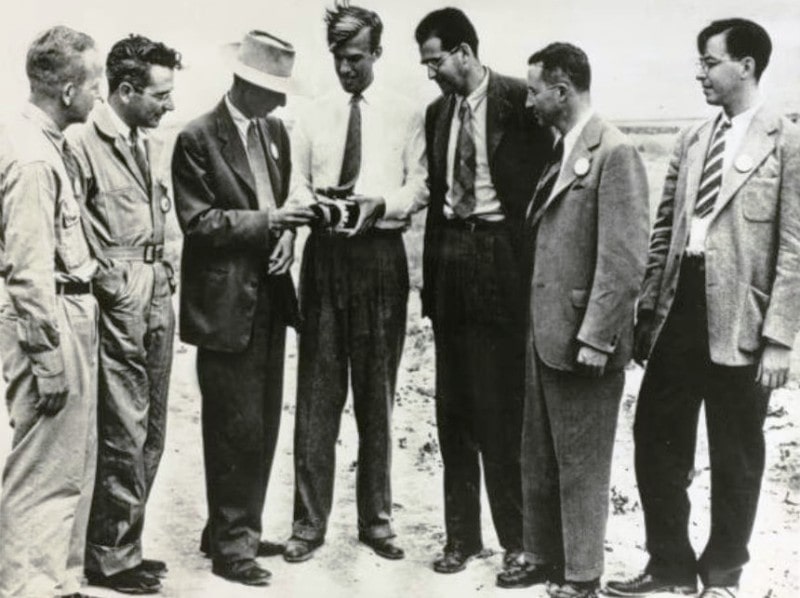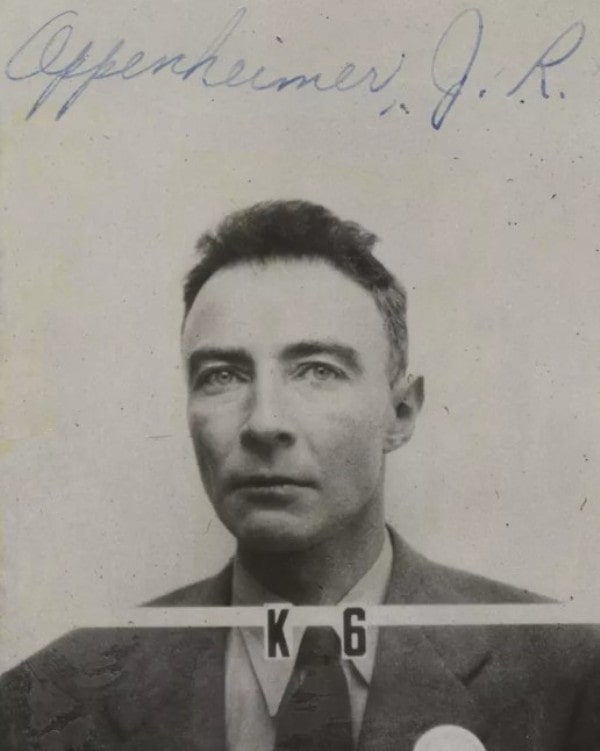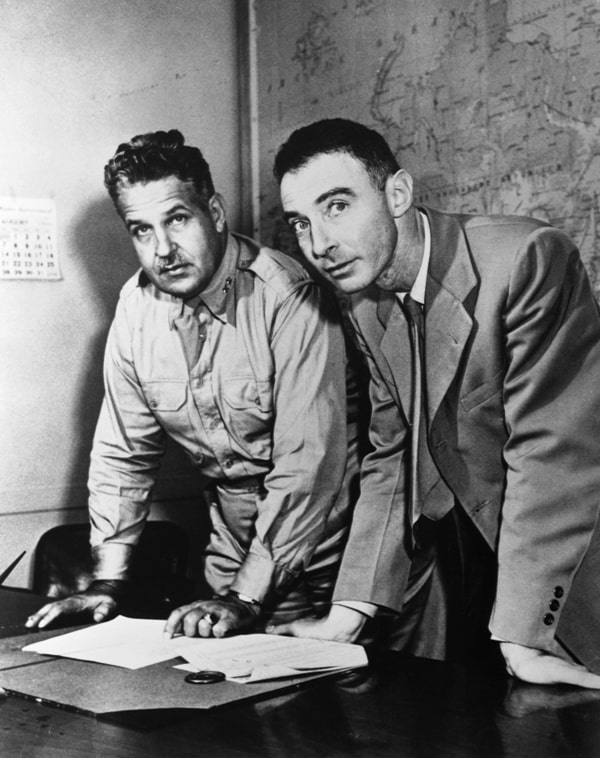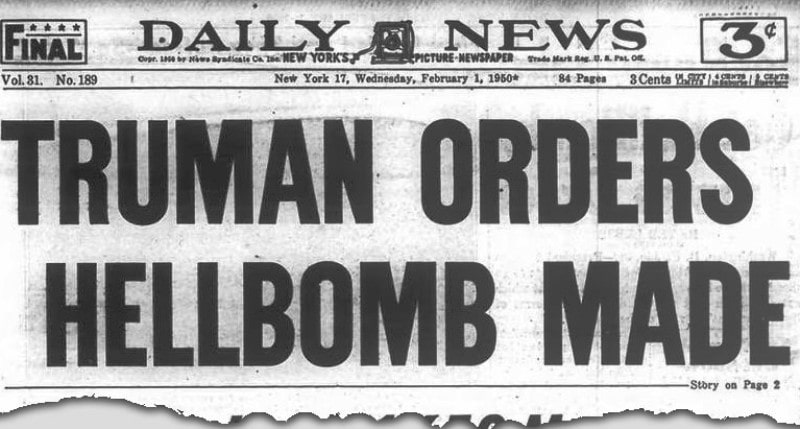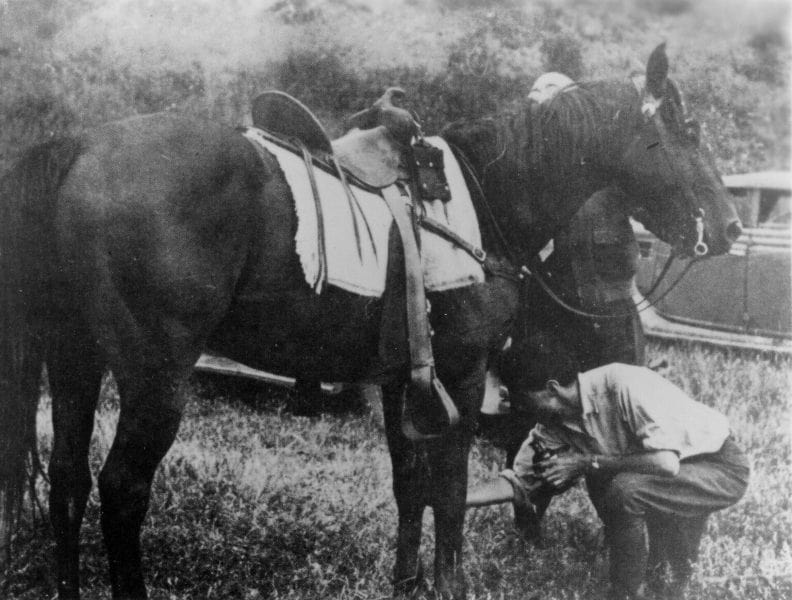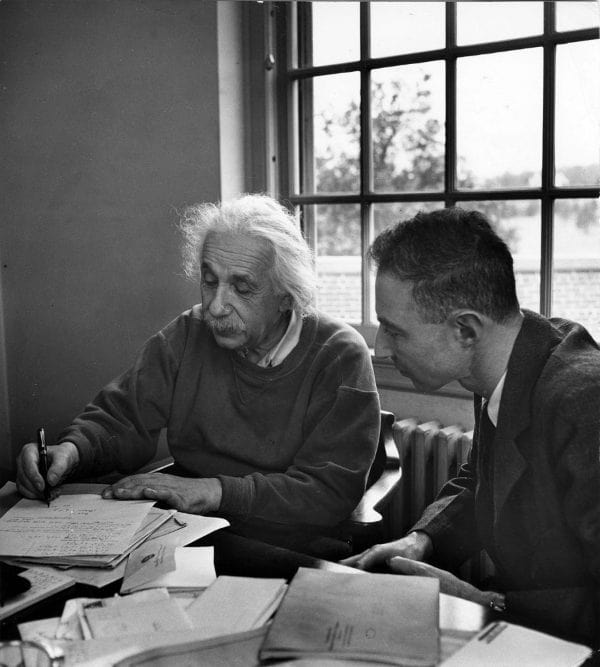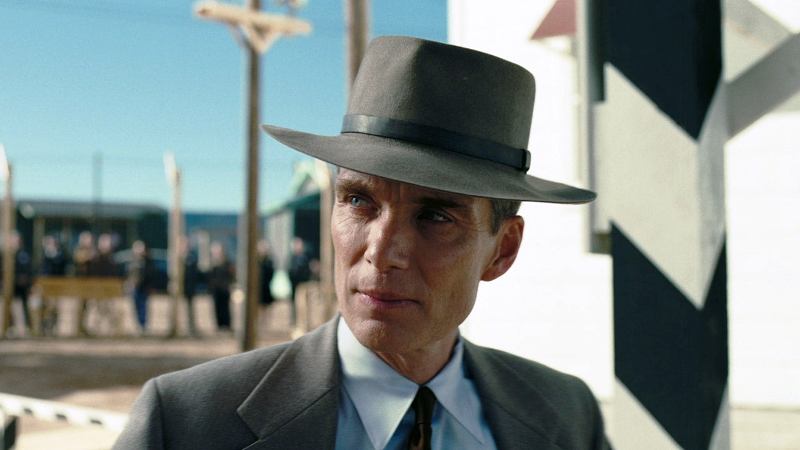J. Robert Oppenheimer Age, Death, Wife, Children, Family, Biography & More
| Bio/Wiki | |
|---|---|
| Full name | Julius Robert Oppenheimer |
| Nickname | Oppie [1]Business Standard |
| Names earned | Father of atomic bombs |
| Profession | Theoretical Physicist |
| Famous for | Playing a vital role in the making of world's first atomic bomb |
| Physical Stats & More | |
| Height (approx.) | in centimeters- 183 cm in meters- 1.83 m in feet & inches- 6’ |
| Weight (approx.) | in kilograms- 55 kg in pounds- 121 lbs |
| Hair Colour | Grey |
| Career | |
| Awards | • Medal for Merit from President Harry S. Truman (1946) • Enrico Fermi Award and a cash prize of $50,000 by the President of the United States (1963)  |
| Personal Life | |
| Date of Birth | 22 April 1904 (Friday) |
| Birthplace | New York City, United States of America |
| Date of Death | 18 February 1967 |
| Place of Death | Princeton, New Jersey, United States of America |
| Age (at the time of death) | 62 Years |
| Death Cause | Laryngeal cancer [2]WIRED UK |
| Zodiac sign | Taurus |
| Signature |  |
| Nationality | American |
| Hometown | New York |
| School | • Alcuin Preparatory School, New York • School of Ethical Culture Society, New York (1911) |
| College/University | • Harvard University, Cambridge, Massachusetts (1922-1925) • Christ’s College, University of Cambridge (until 1926) • University of Göttingen, Germany (1926-1927) |
| Educational Qualification(s) | • Summa cum Laude Bachelor of Arts (Chemistry major) from Harvard University • PhD in physics from University of Göttingen [3]J. Robert Oppenheimer and the American Century by David C. Cassidy – Google Books |
| Religion | Judaism [4]J. Robert Oppenheimer and the American Century by David C. Cassidy – Google Books |
| Address | House number – 1967, Peach St., Los Alamos, New Mexico – 87544, United States of America |
| Hobby | Reading and writing poetry |
| Controversy | The 1954 Oppenheimer Hearing Case • Allegations of Being Involved With The Communist Party USA In 1954, Oppenheimer was subjected to a trial to determine whether his security clearance should be revoked or not. As per sources, before joining Project Manhattan in 1942, Oppenheimer had already attracted the attention of the US authorities due to his association with the Communist Party USA and its members. Additionally, his close family members, including his wife, brother, and in-laws, were also affiliated with the party. Subsequently, it came to light that the FBI had placed his house and office under surveillance. • Claims of Shielding An Espionage Attempt According to the FBI, in early 1943, Haakon Chevalier, a French Literature professor and a friend of Oppenheimer's at the University of California, approached Oppenheimer and had a brief conversation with him in the kitchen of his house. During this talk, Chevalier informed Oppenheimer about George Eltenton's alleged actions, suggesting that Eltenton might be sharing technical information with the Soviet Union. The FBI also claimed that Oppenheimer did not promptly report the incident to the authorities. When questioned by the FBI in 1946, Oppenheimer provided inconsistent statements and tried to protect his friend Haakon by mentioning various names. • Allegations of Sharing Critical Information With The Soviet Union After William Liscam Borden, the former executive director of the United States Congress Joint Committee on Atomic Energy, wrote a letter to the FBI director J. Edgar Hoover on 7 November 1953, alleging that Oppenheimer was involved with a Soviet intelligence unit and had shared vital information with Soviet agents in the US, suspicions escalated. Despite the US government's disbelief in Borden's claims, President Eisenhower instructed the FBI to conduct an investigation. [5]Danger and Survival: Choices about the Bomb in the First Fifty Years by McGeorge Bundy - Google Books On 21 December 1953, the government put a stop to Oppenheimer's "Q Clearance," which he had obtained during his tenure as the director of the Los Alamos Lab. Despite discussing the possibility of terminating his consultant contract with the Atomic Energy Commission (AEC) with Lewis Strauss, Oppenheimer decided not to resign and instead chose to seek a court trial to prove his innocence. On 23 December 1953, Maj. Gen. Kenneth Nichols, who served as the general manager of the AEC, wrote a letter to Oppenheimer detailing allegations that suggested he posed a security risk. [6]Nuclear Files • Charges Against Oppenheimer Oppenheimer encountered dual charges. The initial charges alleged that he had affiliations with communists during the early phases of World War II and had given inconsistent statements to the Federal Bureau of Investigation. The second set of charges revolved around his opposition to the development of the hydrogen bomb in 1949, and his continued efforts to lobby against it, even after President Harry S. Truman had authorized its development to proceed. [7]The Oppenheimer Case: Security on Trial by Stern - Google Books • Beginning of The Trial The trial of Oppenheimer commenced on 12 April 1954, overseen by a panel of three judges. It centered on 24 accusations, primarily focusing on his associations with Communist and leftist groups between 1938 and 1946, as well as his deliberate and false reporting of the Chevalier incident to authorities. The last accusation pertained to his opposition to the hydrogen bomb's creation. A considerable part of the proceedings concentrated on Oppenheimer's involvement in recruiting former students affiliated with the Communist Party to work at Los Alamos, particularly Ross Lomanitz and Joseph Weinberg. There were investigations regarding his relationship with Jean, whom FBI agents observed him with even after he got married. Oppenheimer denied sharing any sensitive information about Project Manhattan with her, claiming that his interest in her was purely romantic. The court inquired about inconsistencies in his statements concerning his friend Chevalier. In response, Lieutenant General Lesley Groves, the head of Project Manhattan, testified that Oppenheimer's hesitation to report Chevalier was due to a mindset similar to that of an American schoolboy, where he felt it would be wrong to betray a friend. Groves explained that Oppenheimer's crucial role in the American war effort during World War II protected him from facing any disciplinary action in the 1940s. During the trial, numerous prominent figures, including scientists like Fermi, Albert Einstein, Isidor Isaac Rabi, Hans Bethe, and government officials and military personnel such as John J. McCloy, James B. Conant, and Bush, as well as two former AEC chairmen and three former commissioners, provided testimony in support of Oppenheimer. Lansdale, who had been involved in investigating Oppenheimer during the war, also testified on his behalf, describing him as "loyal and discreet" and denying his affiliation with Communism. [8]The Oppenheimer Case: Security on Trial by Harold P. Green and Philip M Stern – Google Books • Judgement On 27 May 1954, the panel of 3 judges reached the conclusion that 20 out of the 24 charges against Oppenheimer were either partially or entirely true. As a result, they recommended the withdrawal of the "Q Clearance" granted to him by the United States government in the 1940s, effectively ending Oppenheimer's role as a nuclear scientist associated with the US government. The findings indicated that while he opposed the development of the H-bomb and his lack of enthusiasm influenced others, he did not actively discourage their work on it, contrary to Nichols' letter's claims. The panel also found no evidence to support the accusation that he was a formal member of the Communist Party, considering him a loyal citizen instead. The panel acknowledged Oppenheimer's ability to keep crucial information confidential but noted that he was susceptible to being influenced or coerced during a specific period. His association with Chevalier was considered unacceptable under the security protocols for someone with access to highly classified information, indicating a significant lack of respect for security regulations. Furthermore, they observed that his vulnerability to influence posed potential risks to national security interests. Evans, a member of the panel of judges, supported the restoring Oppenheimer's security clearance. He emphasized that the Atomic Energy Commission (AEC) had already cleared Oppenheimer of the majority of charges outlined in Nichol's letter. Evans contended that denying clearance solely based on past decisions would be unsuitable in a country that values freedom, particularly when considering that Oppenheimer now posed a lower security risk. Furthermore, he maintained that Oppenheimer's association with Chevalier did not suggest disloyalty and that he did not impede the development of the H-bomb. [9]The Oppenheimer Case: Security on Trial by Harold P. Green and Philip M Stern – Google Books • Repercussions of The Trials Following the beginning of the legal proceedings involving Oppenheimer and the subsequent revocation of his security clearance, the scientists who worked with him on Project Manhattan composed a letter directed to the AEC. In the letter, they expressed their endorsement of Oppenheimer while also expressing their discontentment with the actions taken by the AEC.  • Nichol's Letter to The AEC In May 1954, although his name was cleared, the AEC decided not to restore his security clearance. On 12 June 1954, Kenneth D. Nichols wrote a letter to the AEC, cautioning them against reinstating his clearance. He expressed reservations about Oppenheimer's trustworthiness due to his links with Communism, even though he was not a member of any political party. Nichols also criticized Oppenheimer's behavior, describing it as "hindrance and disregard for security," which showed a persistent disregard for a reasonable security system. [10]The Oppenheimer Case: Security on Trial by Harold P. Green and Philip M Stern – Google Books • The 2022 Reversal On 16 December 2022, Jennifer Granholm, the Secretary of Energy of the United States, announced that the 1954 ruling was rendered invalid due to a faulty procedure. She further expressed her support for Oppenheimer, affirming his loyalty, and argued that his security clearance should have been restored once he was found not guilty by the court. [11]Smithsonian Magazine |
| Relationships & More | |
| Marital Status (at the time of death) | Married |
| Affairs/Girlfriends | • Jean Frances Tatlock (politician, psychologist, physician, member of the Communist Party USA) • Katherine “Kitty” Oppenheimer (biologist, botanist, former member of the Communist Party USA) 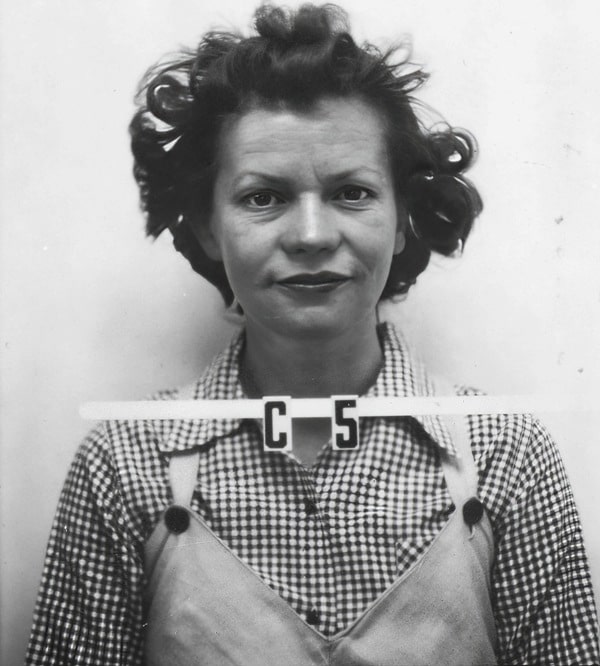 • Ruth Tolman (psychologist, professor) 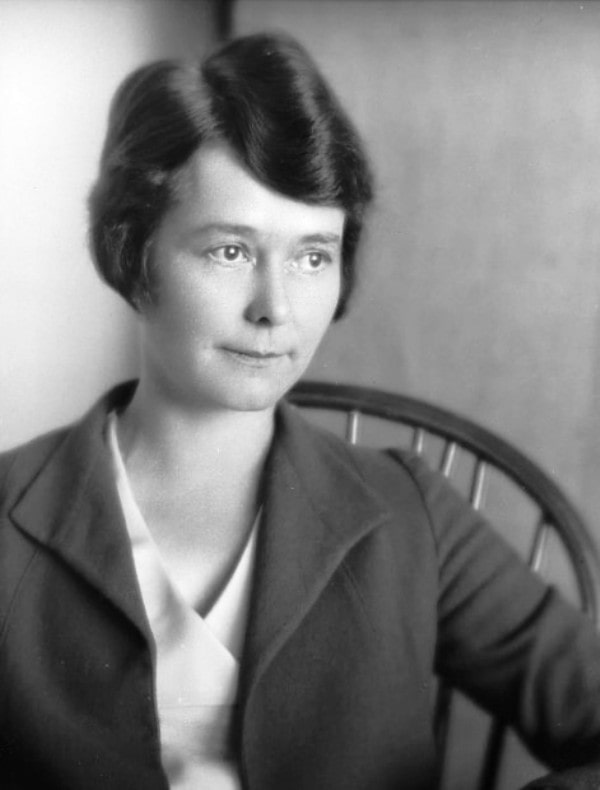 Note: Oppenheimer began a romantic relationship with Jean Frances in 1936. Their romantic involvement allegedly continued even after Robert married Kitty. In a letter addressed to Major General Kenneth D. Nichols, who was the General Manager of the United States Atomic Energy Commission, Robert stated that he had asked Jean to marry him twice, but she rejected his proposals. He also mentioned that they seldom met during their courtship. They broke up after dating for a couple of years. In his letter, he claimed, "In the spring of 1936, I had been introduced by friends to Jean Tatlock, the daughter of a noted professor of English at the university; and in the autumn, I began to court her, and we grew close to each other. We were at least twice close enough to marriage to think of ourselves as engaged. Between 1939 and her death in 1944 I saw her very rarely." In August 1939, he met Katherine "Kitty" Oppenheimer and subsequently initiated a romantic relationship with her. They remained together until their marriage in 1940. After concluding his role as the director of Los Alamos Laboratory, he allegedly engaged in an extramarital affair with Ruth Tolman, the wife of his friend Richard Tolman. [12]American Prometheus: The Triumph and Tragedy of J. Robert Oppenheimer by Kai Bird and Martin J. Sherwin – Google Books |
| Marriage Date | 1 November 1940 |
| Family | |
| Wife/Spouse | Katherine “Kitty” Oppenheimer (German-American biologist, botanist, member of the Communist Party USA)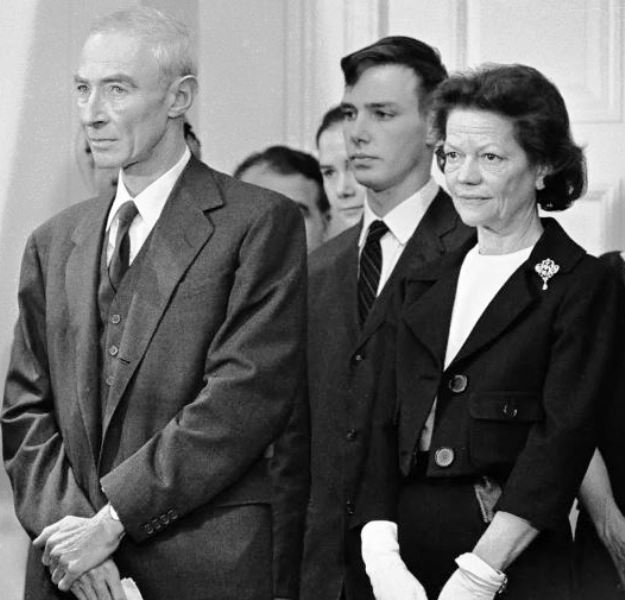 |
| Children | Son- Peter Oppenheimer (professor at the California Institute of Technology and the University of California at Berkeley)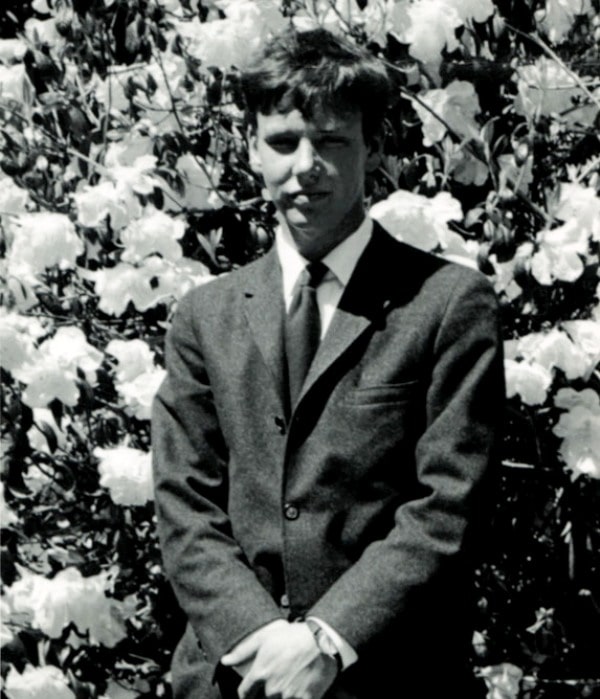 Daughter- Katherine “Toni” Oppenheimer 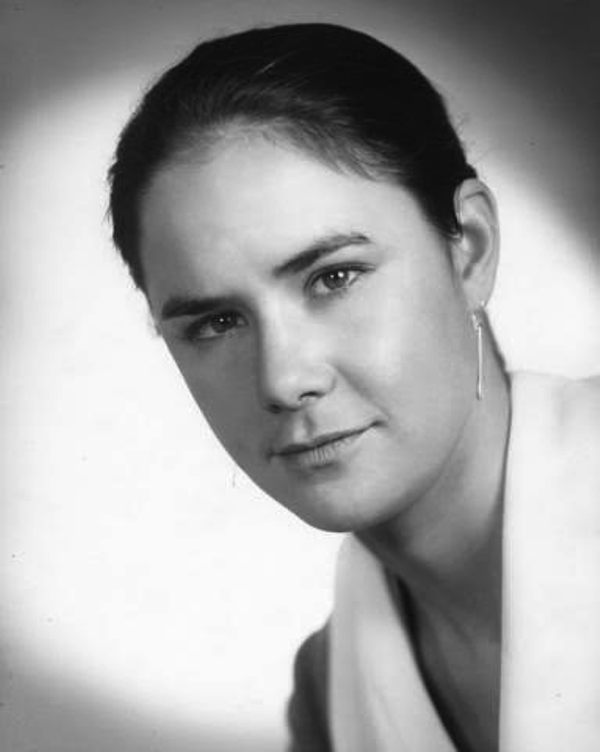 Note: Toni was diagnosed with polio as a child. |
| Parents | Father- Julius Seligmann Oppenheimer (migrated to the US in 1888; businessman) Mother- Ella 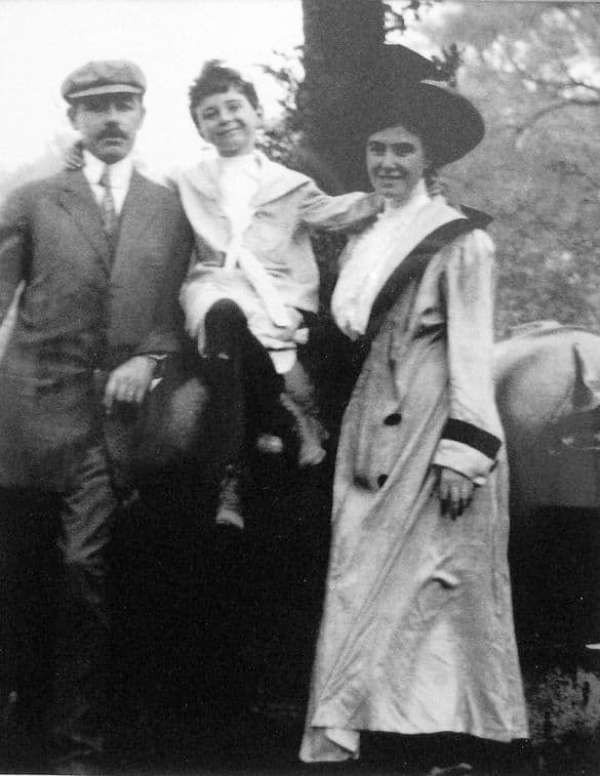 |
| Siblings | Brother- Frank Friedman Oppenheimer (particle physicist, cattle rancher, professor of physics at the University of Colorado, founded Exploratorium in San Francisco, California, in 1969)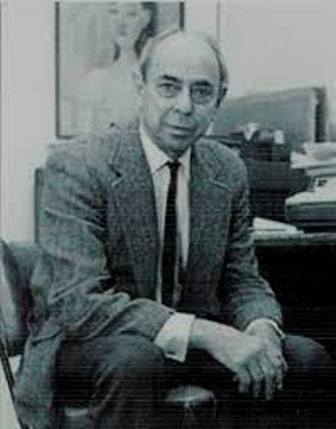 |
Some Lesser Known Facts About J. Robert Oppenheimer
- J. Robert Oppenheimer was an American theoretical physicist. In Project Manhattan, Oppenheimer held the position of director at the Los Alamos Laboratory, where he played a crucial role in the development of the world’s first atomic bomb. In 1954, he gained attention when legal action was taken against him for his previous affiliations with the Communist Party USA. Due to his significant contribution, he earned the title “father of atomic bombs.”
- J. Robert Oppenheimer was born into an aristocratic, non-religious Ashkenazi Jewish family. [13]The Hindu
- During his time in school, he excelled academically and displayed a strong passion for English and French literature. He completed both the third and fourth grades in just one year and even advanced through half of the eighth grade. As he continued his academic journey, he grew fond of chemistry and mineralogy.
- At the age of 12, he was mistakenly recognized as a professional geologist and was invited to give a speech at the New York Mineralogy Club.
- In 1921, Robert finished his schooling, but he had to take a one-year break from his studies due to colitis.
- In 1922, he joined the Harvard University. The university required science students to take extra courses in history and literature, along with a choice between philosophy or mathematics. Robert chose mathematics for his additional studies.
- Due to his delayed start, he decided to take six courses per term, exceeding the usual four. His outstanding academic achievements resulted in his acceptance into the undergraduate honour society, Phi Beta Kappa. Moreover, his achievements in independent study led to him being awarded graduate status in physics, enabling him to bypass introductory courses and explore more advanced topics. A thermodynamics course taught by Percy Bridgman ignited his curiosity in experimental physics.
- After completing his studies at Harvard University, Oppenheimer became deeply interested in Hindu sacred texts, particularly the Bhagavad Gita. This fascination had a significant impact on him, leading him to integrate quotes from the Bhagavad Gita and Meghaduta into his interviews as a scientist. In a letter to his brother Frank, he expressed his admiration for the Gita, considering it a captivating and exquisite philosophical song. He even named his car Garuda. In an interview, Isidor Rabi, a scientist who had a close working relationship with Oppenheimer, claimed,
Oppenheimer was overeducated in those fields which lie outside the scientific tradition, such as his interest in religion, in the Hindu religion in particular, which resulted in a feeling for the mystery of the universe that surrounded him almost like a fog. He saw physics clearly, looking toward what had already been done, but at the border he tended to feel there was much more of the mysterious and novel than there actually was … [he turned] away from the hard, crude methods of theoretical physics into a mystical realm of broad intuition….”
- Thereafter, he enrolled at Christ’s College, University of Cambridge. While studying there, he addressed a letter to Ernest Rutherford, expressing his desire to carry out research at Rutherford’s Cavendish Laboratory. To gain access to the laboratory, Oppenheimer sought his teacher Bridgman’s assistance and asked him to write a recommendation letter to Rutherford. Bridgman did compose the letter, but in it, he wrote,
Oppenheimer “didn’t know one end of the soldering iron from the other.” The suspensions in the galvanometers for measuring tiny currents had to be replaced repeatedly at Oppenheimer’s own expense whenever he used the instruments.”
- Rutherford was not impressed with Oppenheimer and thus refused to let him work in his laboratory. Subsequently, physicist J. J. Thompson agreed to take Oppenheimer as his student, but with the requirement that Oppenheimer must first finish additional physics laboratory courses before they could begin working together.
- Despite having the opportunity to work with J. J. Thompson, Oppenheimer felt unsatisfied while he was at Cambridge. In a letter to a friend, he conveyed his discontent, explaining that he was experiencing a challenging phase, finding the laboratory work excessively monotonous, and feeling that he wasn’t gaining any knowledge from it due to his poor performance.
- He also developed an antagonistic and unsympathetic bond with his professor, Patrick Blackett, who went on to win the Nobel Prize in 1948. According to Oppenheimer’s friend, he confessed to placing a poisonous apple on Blackett’s desk. As a result, Oppenheimer’s parents intervened, persuading the university not to pursue legal action or expulsion. Instead, they put him on probation and ordered him to attend regular sessions with a psychiatrist in Harley Street, London.
- In 1926, Oppenheimer pursued his PhD at the University of Göttingen in Germany. Reportedly, he was invited to join the university by Max Born, a physicist and mathematician of German-British descent, who was greatly impressed by Oppenheimer’s knowledge when he visited the University of Cambridge.
- In the same year, Oppenheimer released his first research article on molecular band spectra, which detailed a thorough method for calculating transition probabilities within the spectra.
- Oppenheimer, as a student, was hyperactive. His PhD classmates once submitted a petition to his guide Max Born, expressing their intention to boycott classes if Oppenheimer’s disruptive behaviour during lectures wasn’t addressed. [14]American Prometheus: The Triumph and Tragedy of J. Robert Oppenheimer by Bird and Sherwin – Google Books
- The Born-Oppenheimer approximation, jointly published by Oppenheimer and Born in 1927, brought a groundbreaking change in research in quantum mechanics and nuclear physics. This approximation differentiates between the movements of nuclei and electrons during the mathematical analysis of molecules. It is widely acknowledged as a revolutionary advancement in the field of scientific study during that time.
- Oppenheimer, during his time in Europe, released more than twelve papers that covered various substantial breakthroughs in the domain of quantum mechanics.
- After finishing his PhD in Germany, Oppenheimer was granted a fellowship by the United States National Research Council in September 1927. The fellowship allowed him to enrol at the California Institute of Technology (Caltech). However, Bridgman expressed a preference for Oppenheimer to be at Harvard instead. As a result, Oppenheimer decided to split his fellowship between Harvard in 1927 and Caltech in 1928 for the academic year 1927-1928.
- At Caltech, he conducted research with Linus Pauling, an American chemical engineer, to study chemical bonds. In the research, Oppenheimer’s contribution was providing mathematical data, while Pauling combined Openheimer’s mathematical data with the chemical data. However, their partnership ended when Oppenheimer invited Pauling’s wife, Ava Helen Pauling, to a meeting in Mexico.
- Afterwards, he worked with Wolfgang Pauli, an Austrian theoretical physicist, at the Swiss Federal Institute of Technology (ETH). Their focus was on studying quantum mechanics and the continuous spectrum.
- After he returned to the United States from Switzerland, he became an associate professor at the University of California, Berkeley. There, he worked with Raymond T. Birge, a distinguished American physicist. Simultaneously, Oppenheimer commenced teaching physics at Caltech.
- Later, Oppenheimer worked with Ernest O. Lawrence, the renowned Nobel Prize-winning physicist, and his group of pioneering cyclotron researchers at Berkeley’s Radiation Laboratory. He aided Lawrence and his team in understanding the data produced by their machines, which ultimately resulted in the creation of the Lawrence Berkeley National Laboratory.
- It is said that Lawrence was greatly impressed by Oppenheimer’s physics expertise, leading him to appoint Oppenheimer as a professor at the University. However, Lawrence insisted that Oppenheimer should resign from his teaching position at Caltech. As a result, a solution was reached where the University of California permitted Oppenheimer to take a six-week leave each year to teach one term at Caltech. In his role as a professor at the University of California, Oppenheimer received an annual salary of $3,300.
- Oppenheimer’s contributions to the theory of cosmic ray showers were substantial, and his efforts ultimately paved the way for the advancement of the quantum tunnelling model.
- In 1931, he and his student, Harvey Hall, published “Relativistic Theory of the Photoelectric Effect.” In this paper, they challenged physicist Paul Dirac’s assertion that two energy levels of the hydrogen atom have the same energy.
- Afterwards, Oppenheimer and Melba Phillips worked together to document the calculations related to the influence of deuterons on artificial radioactivity. In 1935, they released the Oppenheimer-Phillips process to examine the consequences of deuterons on artificial radioactivity.
- In the early 1930s, he wrote a paper challenging Paul Dirac’s claims about electrons having both positive charge and negative energy. In this work, Oppenheimer predicted the existence of a positron or an antielectron, which was later confirmed by Carl David Anderson, leading to Anderson being awarded a Nobel Peace Prize.
- Following his friendship with Richard Tolman, an American physicist, Oppenheimer developed a keen fascination with astrophysics. During the late 1930s, he and Tolman worked together on several research papers, delving deeply into the characteristics of neutron stars.
- As per sources, Oppenheimer’s involvement in politics became evident in the late 1930s, shortly before the onset of World War II. The suffering endured by his Jewish relatives in Germany due to Hitler’s anti-Semitic policies and the challenges faced by his students during the American Depression significantly impacted his political inclinations, pushing him towards left-leaning beliefs. Although some of his family members were associated with the Communist Party, Oppenheimer refrained from becoming a member himself. Nonetheless, his stance appeared to shift away from Communist influence when Hitler and Stalin formed the German-Soviet pact, which allowed Hitler to initiate the war.
- In 1938, Oppenheimer and Tolman released a publication titled On the Stability of Stellar Neutron Cores in which they discussed white dwarfs.
- Afterwards, he collaborated with his student George Michael Volkoff to release a research article named On Massive Neutron Cores. This paper demonstrated that stars possess a particular mass threshold, referred to as the Tolman-Oppenheimer-Volkoff limit, beyond which they cannot maintain stability as neutron stars and will undergo gravitational collapse.
- In 1939, Oppenheimer and his student, Hartland Snyder, made a significant contribution to astrophysical research in the United States by foreseeing the presence of black holes in their research paper On Continued Gravitational Contraction. This discovery had a pivotal impact and revitalized astrophysical studies in the 1950s.
- During World War II, the United States, the United Kingdom, and Canada collaborated on the Manhattan Project, a research and development initiative aimed at creating the world’s first atomic bomb. Prompted by the Einstein-Szilárd letter, President Franklin D. Roosevelt authorized the project in 1939 to address fears that Nazi Germany could potentially develop atomic weapons. Due to his left-leaning political views, Einstein was refused the security clearance to become a member of the project.
- The U.S. Army Corps of Engineers assumed control of the project in 1942, and in September of the same year, J. Robert Oppenheimer was appointed to lead the project’s covert weapons laboratory. Lieutenant General Lesley Groves, the project’s director, made this decision amidst suspicions surrounding Oppenheimer’s connections to members of the Communist Party USA, including his former girlfriend Jean Frances Tatlock. Groves explained in an interview that he chose Oppenheimer not only for his extensive physics expertise but also for his “excessive ambition,” which he believed was advantageous for the project.
- Oppenheimer and Groves began searching for a more ideal and isolated location for the researchers to carry on with their work in late 1942. During their search for a suitable site, they journeyed to Mexico. There, Oppenheimer proposed a familiar location near Santa Fe, New Mexico, a flat mesa that once served as the grounds for the Los Alamos Ranch School. Although the US Army engineers had concerns about road access and water supply, they mostly viewed it as a perfect site.
- Subsequently, they established the Los Alamos Laboratory on the former school premises, repurposing some existing buildings and quickly erecting numerous new ones. At the laboratory, Oppenheimer gathered a distinguished group of physicists from that time, whom he called the “luminaries.”
- Oppenheimer and his coworkers were required to join the US Army since the laboratory was intended for military purposes. According to sources, Oppenheimer sought a direct appointment as a lieutenant colonel and bought a uniform. Nonetheless, he was considered unsuitable due to being underweight, suffering from chronic lumbosacral joint pain, and enduring severe coughing. The plan to enlist the scientists in the US Army was abandoned after objections from senior scientists Rabi and Robert Bacher.
- Subsequently, a decision was reached to transfer the laboratory’s authority from military control to the University of California, which would manage it through a contract with the War Department.
- In the beginning, Oppenheimer encountered difficulties in handling a sizable project due to his limited expertise. Nevertheless, he progressively honed his abilities and transformed into a proficient leader, overseeing a team consisting of more than 6,000 individuals. Victor Weisskopf, a theoretical physicist associated with the project, mentioned in an interview,
Oppenheimer directed these studies, theoretical and experimental, in the real sense of the words. Here his uncanny speed in grasping the main points of any subject was a decisive factor; he could acquaint himself with the essential details of every part of the work. It was his continuous and intense presence, which produced a sense of direct participation in all of us; it created that unique atmosphere of enthusiasm and challenge that pervaded the place throughout its time.”
- In 1943, Oppenheimer instructed the researchers working under him to commence the development of Thin Man, a nuclear bomb using gun-type fission with plutonium. While studying plutonium properties, they unexpectedly came across an isotope of plutonium called Pultomnium-239. Despite being the purest form of plutonium isotopes, its production was limited to small quantities. The Los Alamos Lab received its initial shipment of plutonium enriched by the X-10 Graphite Reactor in April 1944, but the scientists encountered an issue. The plutonium produced by the reactor had a higher concentration of plutonium-240, rendering it unsuitable for use in a gun-type weapon.
- A scientist working under Oppenheimer once proposed using deadly radioactive material created in the laboratory as a weapon against the Germans to secure victory in World War II. Oppenheimer, however, rejected the idea, stating that he would only consider it if the lab could produce a sufficient quantity to poison over a million Germans.
- In July 1944, the Thin Man project’s design and development were abandoned in favour of pursuing an implosion-type weapon.
- Little Boy, an implosion-type nuclear bomb, was successfully developed by his team in February 1945.
- On 28 February 1945, following thorough research, a more comprehensive blueprint for another implosion-type nuclear device, referred to as the “Christy gadget,” was concluded during a meeting held in Oppenheimer’s office.
- The world’s first nuclear explosion occurred in Alamogordo, New Mexico, on 16 July 1945, at 5 a.m.
- The device that was detonated had an estimated yield of around 20 kilotons of TNT. The location of the explosion was named Trinity, a name given by Oppenheimer. The blast generated a massive mushroom cloud that reached a height of over 12 kilometres (40,000 feet) and caused a powerful explosion.
- The heat from the blast was so intense that it melted the sand in the nearby desert, transforming it into a glassy substance known as “Trinitite.” While observing the effects of the nuclear blast, Oppenheimer quoted a verse from the Bhagavad Gita and said,
If the radiance of a thousand suns were to burst at once into the sky, that would be like the splendor of the mighty one.
In an interview, Brigadier General Thomas Farrell described Oppenheimer’s response to the nuclear explosion and said,
Dr. Oppenheimer, on whom had rested a very heavy burden, grew tenser as the last seconds ticked off. He scarcely breathed. He held on to a post to steady himself. For the last few seconds, he stared directly ahead and then when the announcer shouted “Now!” and there came this tremendous burst of light followed shortly thereafter by the deep growling roar of the explosion, his face relaxed into an expression of tremendous relief.”
- According to sources, Oppenheimer chose to codename the nuclear blast tests “Trinity” as a way to remember Jean Tatlock. In a letter to Lt Gen Groves, Oppenheimer talked about it and wrote,
I did suggest it, but not on that ground … Why I chose the name is not clear, but I know what thoughts were in my mind. There is a poem of John Donne, written just before his death, which I know and love. From it a quotation: As West and East / In all flatt Maps – and I am one – are one, / So death doth touch the Resurrection.That still does not make a Trinity, but in another, better known devotional poem Donne opens: “Batter my heart, three person’d God.” [15]The Making of the Atomic Bomb by Richard Rhodes – Google Books
- The United States of America deployed the bomb against Imperial Japan on 6 August 1945, at Hiroshima and on 9 August 1945, at Nagasaki, resulting in the loss of millions of lives.
- On 17 August 1945, he was summoned by President Harry S. Truman to attend a meeting in the Oval Office in Washington, D.C. Reportedly, upon assessing the devastating aftermath of the bombings in Hiroshima and Nagasaki, Oppenheimer was profoundly troubled. He shared his feelings with the US President, admitting that he felt accountable for the loss of lives caused by the bombings. Furthermore, he expressed his strong opposition to further development of nuclear weapons. This discussion left President Truman furious, and reportedly, he instructed his secretary that he did not wish to see Oppenheimer in his office ever again.
- In 1946, President Truman awarded Oppenheimer the Medal for Merit to acknowledge his role as the director of Los Alamos Lab.
- Details regarding Project Manhattan became public after the nuclear bombings of Hiroshima and Nagasaki in August 1945. Subsequently, Oppenheimer assumed the role of a national science spokesperson.
- In November 1945, he left Los Alamos and returned to his position as a teacher at Caltech. However, he left his teaching role there as he reportedly lost interest in the profession after being involved in the Manhattan Project.
- In 1947, he assumed the role of the director at the Institute for Advanced Study in Princeton, New Jersey. As a director, he was offered an annual salary of $20,000, a 17th-century manor with staff (a cook and groundskeeper), and a vast estate spanning 265 acres (107 hectares) of woodlands. During his tenure, Oppenheimer played a significant mentoring role for several renowned physicists, such as Freeman Dyson, Chen Ning Yang, and Tsung-Dao Lee. Additionally, he introduced temporary memberships for scholars in the humanities, such as T. S. Eliot and George F. Kennan. However, this move faced opposition from some mathematics faculty members who preferred the institute to remain exclusively focused on pure scientific research.
- Thereafter, Oppenheimer played a significant role as a consultant on the Board for the Truman Administration’s Report on the International Control of Atomic Energy. It is said that he had a crucial impact on shaping the report. His perspective was that the US government should not only closely oversee the manufacturing of nuclear devices but also regulate the mines involved in extracting plutonium.
- Following the establishment of the Atomic Energy Commission (AEC), Oppenheimer took on the role of chairperson for the General Advisory Committee (GAC). In this position, he played a crucial part in advising the US government on issues concerning project funding, laboratory advancement, and international atomic policy. He advocated for worldwide arms control measures and funding for essential scientific research. Furthermore, he attempted to guide policies toward reducing the likelihood of an arms race that he believed was bound to happen between the United States and the Soviet Union.
- He became the chairperson of the Department of Defense’s Long-Range Objectives Panel in 1948.
- In a conversation with TIME magazine in the same year, while talking about Project Manhattan, Oppenheimer quoted a line from the Bhagavad Gita, “Now I am become death, the destroyer of worlds.”
- In October 1949, Oppenheimer advised the US government against creating a thermonuclear weapon, expressing concern that its use during wartime could result in millions of casualties. Despite his recommendation, President Truman disregarded it and directed the production of the weapon on 31 January 1950.
- He participated in Project Charles in the same year; the project was aimed at developing a highly effective air defence system to protect the US from possible nuclear attacks.
- In 1951, he became part of Project Vista, an initiative aimed at enhancing the United States’ tactical warfare capabilities. While involved in the project, Oppenheimer raised doubts about the effectiveness of strategic bombardment and instead supported the idea of employing smaller tactical nuclear weapons. The concluding findings of Project Vista suggested that the US Army and Navy should play a more prominent role in delivering thermonuclear payloads to enemy forces, surpassing the involvement of the US Air Force. Nevertheless, the US Air Force successfully lobbied and had the report concealed.
- In the same year, Oppenheimer agreed to be involved in the advancement of a thermonuclear weapon project after Edward Teller and mathematician Stanislaw Ulam developed the Teller-Ulam design for a hydrogen bomb. While giving an interview, he said,
The program we had in 1949 was a tortured thing that you could well argue did not make a great deal of technical sense. It was therefore possible to argue also that you did not want it even if you could have it. The program in 1951 was technically so sweet that you could not argue about that. The issues became purely the military, the political and the humane problem of what you were going to do about it once you had it.”
- In August 1952, Oppenheimer’s tenure as the chairman of the GAC came to an end. It is said that President Truman chose not to extend his term to bring in fresh members to the committee.
- Oppenheimer became a member of Project GABRIEL in the same year. As a part of the project, he authored a preliminary report discussing potential risks connected to nuclear fallout.
- Afterwards, he became a member of the Science Advisory Committee of the Office of Defense Mobilization.
- In 1952, he played a crucial part in Project East River, which sought to build an early warning system with the ability to provide American cities with a one-hour warning in case of atomic attacks.
- In the same year, he took part in Project Lincoln, a venture at the MIT Lincoln Laboratory in Lexington, Massachusetts, with the primary goal of creating sophisticated air defence systems. His contributions to the laboratory led to the creation of the Distant Early Warning Line, an interconnected network of radar stations situated in Canada and the Arctic area.
- In 1952, Oppenheimer took charge of a team consisting of five experts affiliated with the State Department’s Panel of Consultants on Disarmament. Their proposal was for the United States government to postpone the planned initial trial of the hydrogen bomb and, instead, focus on pursuing a treaty with the Soviet Union to prohibit thermonuclear testing. The reason for this proposal was to avoid the development of a potentially destructive new weapon and to provide an opportunity for both countries to engage in negotiations regarding their military equipment and arms. The panel also recommended that the US government should engage in transparent communication with the public concerning the risks related to nuclear war and nuclear fallout. However, the Truman-led US government chose to set aside these suggestions.
- Following Dwight D. Eisenhower’s assumption of the presidency in the United States of America, the government initiated Operation Candor. This endeavour sought to adhere to Oppenheimer’s recommendation of educating the public about nuclear weapons, the consequences of nuclear fallout, and the arms race between the US and the USSR.
- In 1953, Oppenheimer’s influence reached its peak as the new government placed significantly greater importance on his recommendations compared to previous administrations.
- Kai Bird and Martin J. Sherwin wrote in their book, “American Prometheus: The Triumph and Tragedy of J. Robert Oppenheimer,” that Nehru extended an offer of Indian citizenship to Oppenheimer in 1954. Nevertheless, Oppenheimer declined the offer.
- J. Robert Oppenheimer passed away on 18 February 1967 in Princeton, New Jersey, as a result of Laryngeal cancer. It was reported that Oppenheimer had been diagnosed with cancer in 1965 and had undergone chemotherapy as part of his treatment. [16]WIRED UK
- Oppenheimer was multilingual and was proficient in speaking and reading numerous languages, such as Greek, Latin, French, German, Dutch, English, and Sanskrit.
- Oppenheimer’s friend shared that during his college days, Oppenheimer experienced depression and would often skip meals to focus on solving mathematical equations.
- Oppenheimer drank alcohol, and he liked consuming whisky and gin; he had a preference for Martinis. [17]Los Alamos Daily Post
- Oppenheimer smoked cigarettes and reportedly experienced several instances of minor tuberculosis throughout his life as a consequence of his smoking habits. It is claimed that he used to smoke 100 cigarettes a day. [18]Medium
- He was an equestrian and had two horses named Chico and Crisis. He owned a German Shepherd as well.
- Robert Oppenheimer once tried to strangle a friend who jokingly mentioned marrying Oppenheimer’s girlfriend.
- J. Robert Oppenheimer, who had a keen passion for art, possessed artwork made by renowned artists like Cézanne, Derain, Despiau, de Vlaminck, Picasso, Rembrandt, Renoir, Van Gogh, and Vuillard.
- He was a good friend of the American scientist Albert Einstein, who spoke in favour of Oppenheimer during the 1954 Oppenheimer Hearing Case.
- Reportedly, Robert Oppenheimer belonged to multiple organizations and unions in the United States that were influenced by the Communist ideology, including a teachers’ union.
- In the book ‘Nehru: Taming an Uncivilized World,’ Nayantara Sahgal, who is Pandit Jawaharlal Nehru’s niece, shared an anecdote about Oppenheimer’s attempt to communicate with Nehru concerning the US government’s ambition to develop a weapon even more potent than the atomic bomb. Sahgal wrote that Oppenheimer asked Nehru not to trade thorium with America in exchange for the wheat that India needed in the 1950s. [19]The Quint
- Actor Cillian Murphy portrayed J. Robert Oppenheimer in the 2023 Hollywood film Oppenheimer.
References/Sources:


